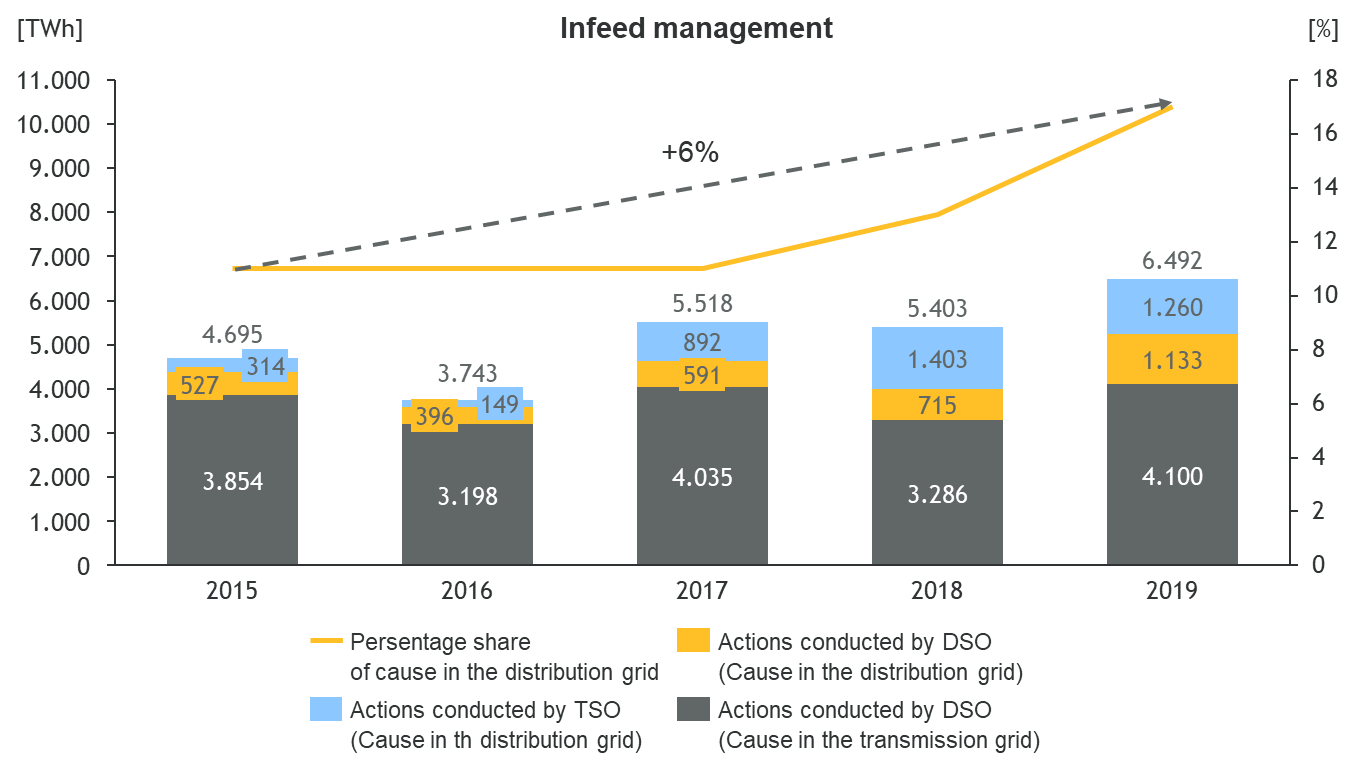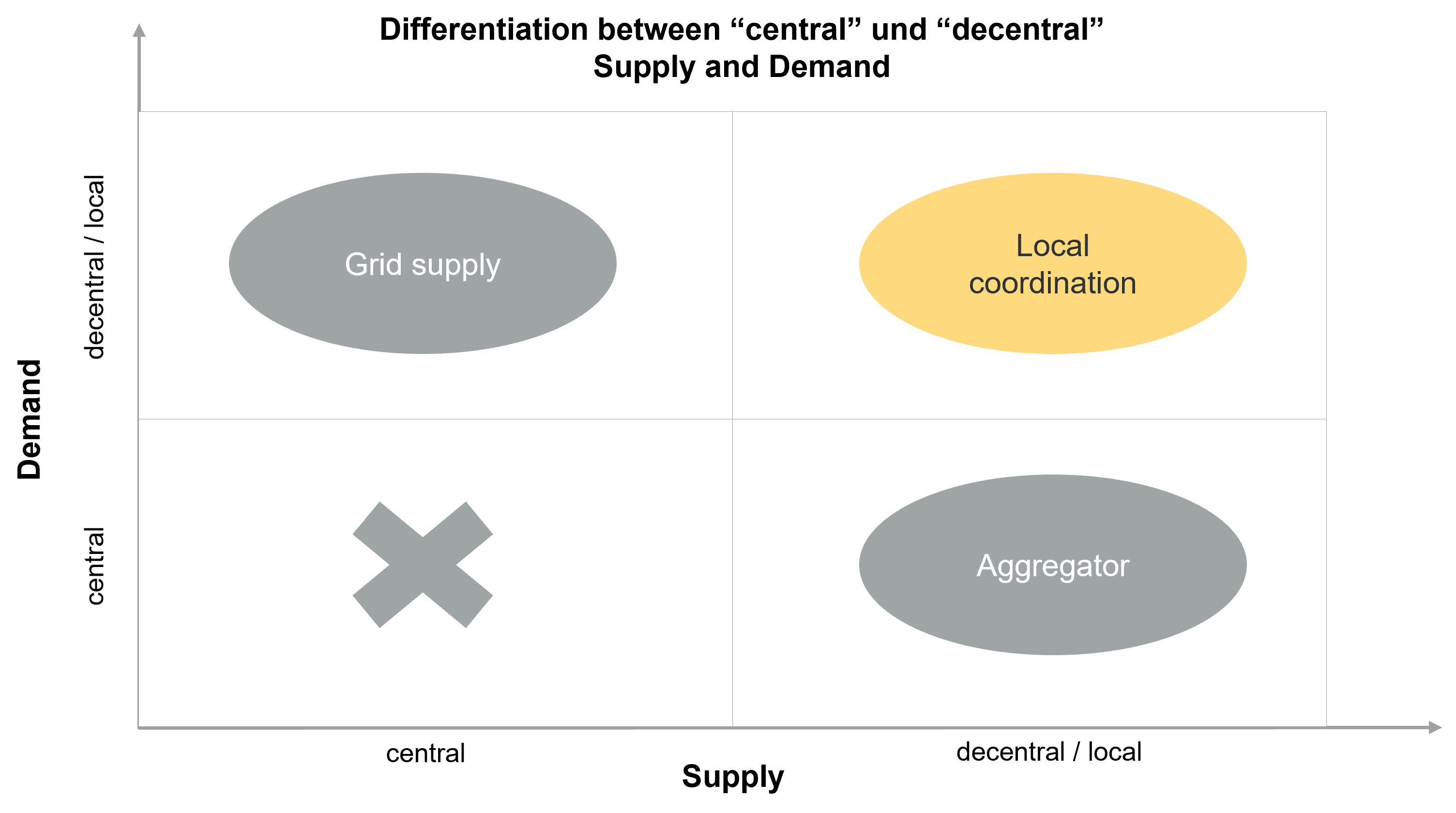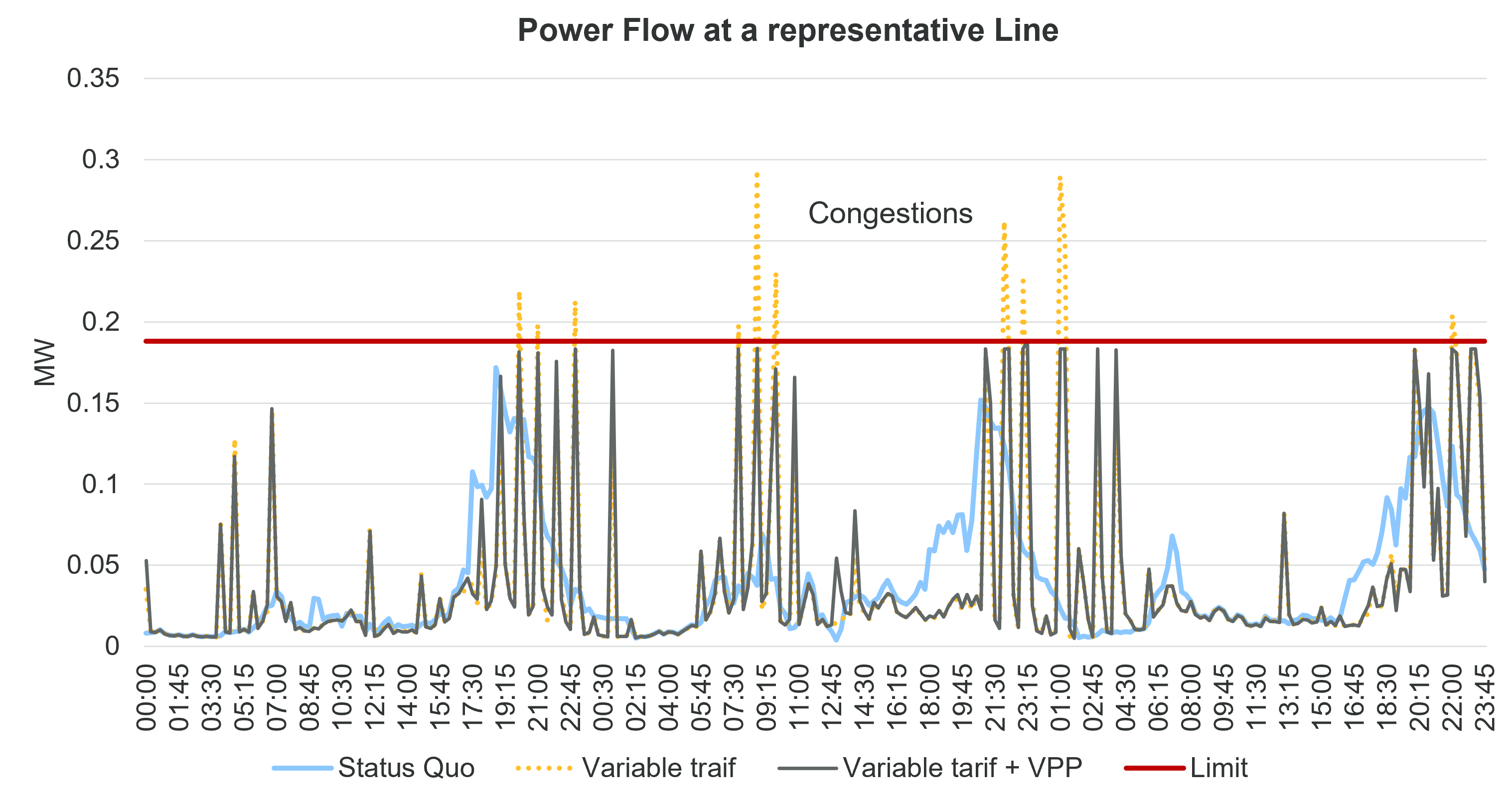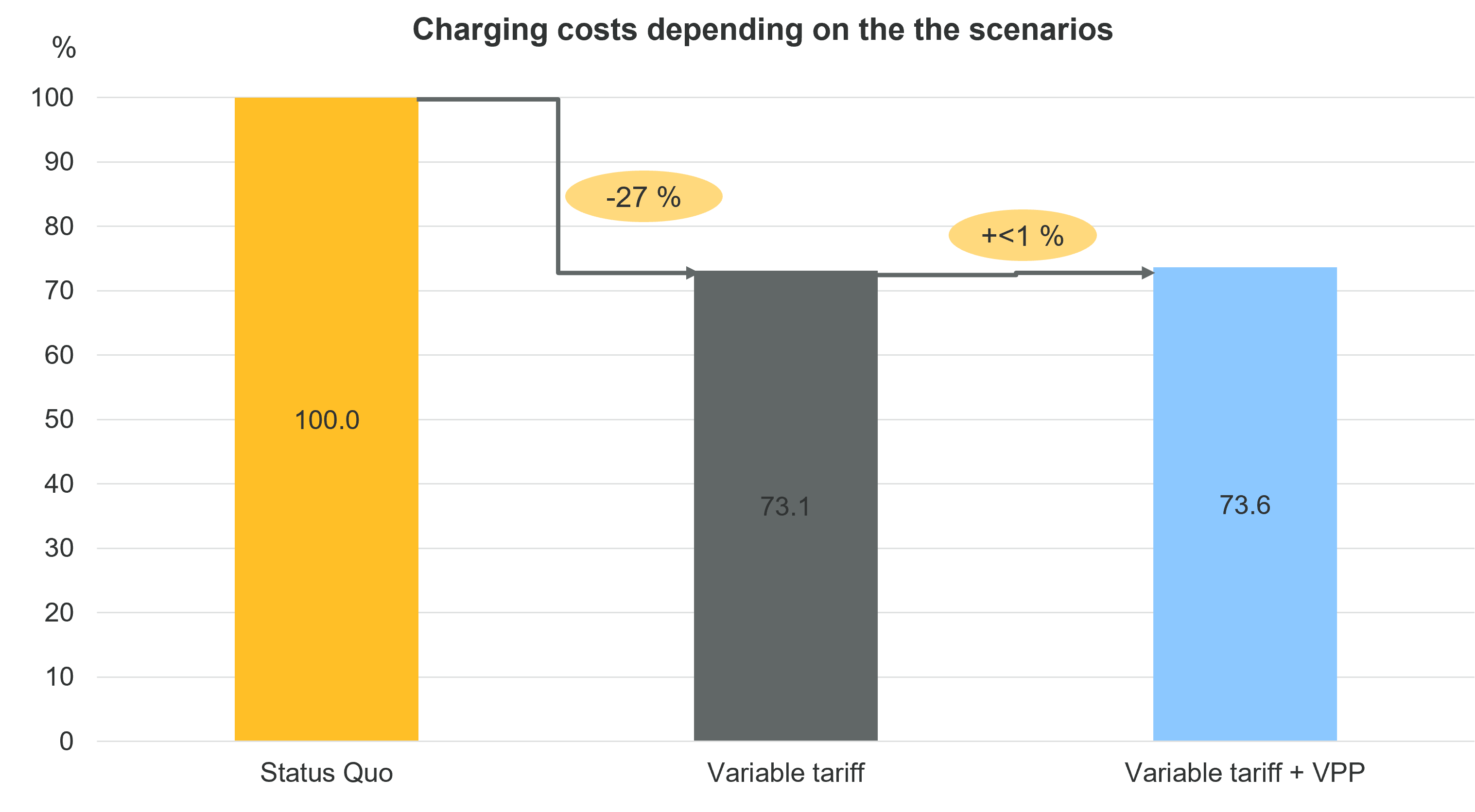
Related to the fact, that more and more electrical consumers are being integrated into the distribution grid, the need to strengthen or expand the networks is increasing. Theoretically, the various technologies in the distribution grid provide great flexibility potential to avoid grid expansion – for example by shifting electricity consumption over time and thus reducing peak loads. To leverage this flexibility potential, however, consumption and generation must be coordinated efficiently. Different approaches already exist – which have different effects on the costs of end users and grid operation.
This challenge was the focus of the event “EWI Insights” of the Institute of Energy Economics at the University of Cologne (EWI). The two EWI researchers Nils Namockel and Arne Lilienkamp presented their research on this topic.
„With the energy transition and the associated expansion of renewable energies, the requirements on the existing electricity system are increasing,” says Nils Namockel, Research Associate at the EWI. “The integration of volatile generators such as PV systems and wind turbines combined with a slow and minor grid expansion is increasingly causing bottlenecks in the grid.” Consequently, the infeed of renewable energy production into the power grid must be temporarily curtailed. In the last years, the curtailed amount of energy has increased: from around 4.7 TWh in 2015 to around 6.5 TWh in 2019. The share of the curtailed amount of energy in the distribution grid, based on the total amount, grew by 11 percent in 2015 to around 17 percent in 2019. As a result, the distribution grid is increasingly coming into focus regarding grid congestion.

On the demand side, the increase in additional consumers at the low-voltage level exacerbates the situation. Electric vehicles and heat pumps represent additional loads in the grid with high degrees of simultaneity. Distribution grids, however, are often not designed for these new challenges.
To counteract future grid constraints, caused for example by excess RE feed-in or simultaneous charging of electric vehicles, at the local level, the distribution grid operator basically has two options:
Related to the digitization, the potential is growing to use flexibility options and thus to reduce or completely replace the capital-intensive grid expansion. In addition to the simple curtailment of renewable energy feed-in, flexibility in terms of consumption (e.g. postponing charging processes for electric vehicles) has the potential to be used in a way that is beneficial to the grid. Studies show that the use of flexibility can reduce the costs of expanding the distribution grid by up to 57 percent (E-Bridge, 2019).
However, it is unclear by which mechanism the flexibility in the distribution grid can be coordinated to remove network bottlenecks in the best possible way. In general, markets coordinate supply and demand.
A distinction can be made between local supply and local demand, each relating to a section in the distribution grid, and central supply or central demand, respectively relating to the higher-level transmission grid.

To coordinate supply and demand, three different market-based approaches exist as shown in the figure:
(1) When consuming electricity from the grid (top left quadrant), a central supply (e.g. electricity in the day-ahead market) is purchased from a energy service provider who makes this electricity available to the end consumer at a fixed price. Variable price signals can stimulate the provision of flexibility within existing wholesale structures.
(2) Aggregators, for example virtual power plants (quadrant bottom right), can aggregate decentralized generation units and make these capacities available to the higher-level electricity markets. This offer is purely offered to the day-ahead or intraday market.
(3) With the decentralized supply, virtual power plants could not only serve the central demand, but also offer the flexible potential of the generation and consumption units to the distribution grid operator. The demand then also has a local character. For example, the sum of the flexibility of several electric vehicles could be used by the distribution network operator to resolve grid constraints. This case is defined as decentralized or local coordination (quadrant top right).
In principle, all three approaches described can coordinate flexibilities at the low voltage level. The decisive factor, however, is how the use of flexibility affects the costs of the end users and the grid utilization. The effects of using variable price signals (case 1) and virtual power plants (case 3) compared to the status quo (no use of flexibilities) are shown in Figures 3 and 4 for an exemplary distribution grid for the year 2030. The special focus here is on electric vehicles, which have a particularly high flexibility potential.
Figure 3 shows the load on a representative line over time (3 days at 15-minute intervals) for the various concepts. The blue line shows the status quo, in which electric vehicles are charged at constant electricity prices as soon as they arrive at home. In the present case, the rated capacity limit of the line is not exceeded (red line). However, changes under consideration of variable electricity prices without simultaneous consideration of grid constraints. They result in so-called herd behavior, in which the charging processes of many electric vehicles are postponed to favorable times, resulting in peak loads and bottleneck situations (yellow dashed line).

Basically, prices reflect scarcity. Wholesale prices, for example, reflect shortages in terms of power generation, but not shortages in infrastructure. Dynamic grid fees could theoretically indicate a shortage in the infrastructure. In Germany, however, it is politically stipulated that grid fees are constant over time. Therefore, they do not currently signal any shortages, but merely serve to refinance the infrastructure.
Shortages in the infrastructure could (after a change in the law) be considered, for example, via grid fees that vary according to capacity or time.
The negative effects of variable electricity prices on grid utilization can also be cushioned by the targeted coordination of charging behavior by virtual power plants, taking grid constraints into account. In this case, charging is coordinated in such a way that, from the perspective of the overall system, charging takes place at low electricity prices, although the grid constraints are considered. Such an optimum can be achieved through integrated optimization processes.
Figure 4 shows that by switching to variable electricity prices, approximately a quarter of the charging costs can be saved compared to the status quo. In contrast, the additional use of a virtual power plant to remove bottleneck situations only increases charging costs marginally.

However, there are regulatory burdens in the way of implementing local coordination mechanisms. For example, the so-called double marketing prohibition under the Renewable Energy Sources Act (EEG) prevents renewable electricity, for which producers receive a feed-in tariff, from being additionally marketed locally. In addition, according to the current structure of the incentive regulation (ARegV), distribution grid operators have a greater incentive to expand their network than to use existing flexibility. In addition, retail electricity prices cannot have a signaling effect, as they have so far not had any variable components. In addition, it could become more difficult for energy suppliers as balancing group managers to balance their balancing groups if households participate in local markets. Because then there could be unforeseen deviations in demand (ewi ER&S, 2017).
In addition to the advancement of digitization (e.g. installation of smart meters), it is essential that the “unbundling” regulations are relaxed. The latter denote the unbundling of grid operation and energy marketing and are intended to enable competition in parts of the energy industry value chain. However, excessively strict requirements hinder the efficient coordination of capacities while taking grid constraints into account. If the unbundling regulations were to be relaxed, market and grid results could be used in a more integrated manner.
Literatur
E-Bridge (E-Bridge, 2019): Wirtschaftlicher Vorteil der netzdienlichen Nutzung von Flexibilität im Verteilnetz. Kurzstudie im Auftrag von innogy SE, EWE NETZ GmbH, Stadtwerke München Infrastruktur GmbH, 2019.
Bertsch J., Elberg C., Helgeson B., Knaut A., Tode C. (ewi ER&S, 2017): Disruptive Potential in the German Electricity System – an Economic Perspective on Blockchain. ewi Energy Research & Scenarios gGmbH, Juli 2017.